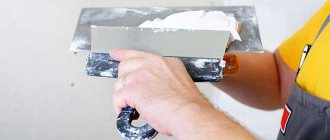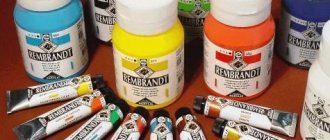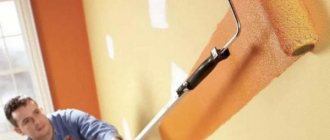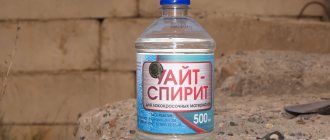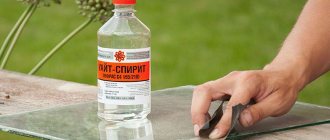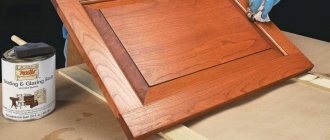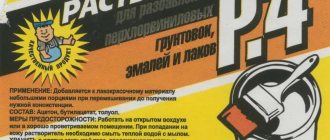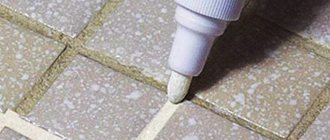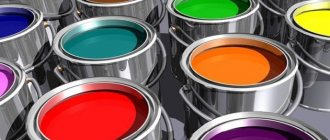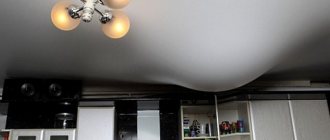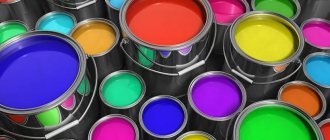Gouache is a universal paint for creating color compositions. But six basic colors are usually not enough to convey the naturalness of objects. Experienced artists recommend mixing white to create new shades. Therefore, white is required in large quantities. And here a natural question arises for novice masters. They are often perplexed: what is the difference between zinc white and titanium white? Which ones are better to buy? Let us help you understand this issue.
White paints and the history of their creation
Whitewash is any type of white paint; they can be made from different components. Initially, they came up with the idea of producing white color from lead; lead white formula included poisonous elements; they were used in Ancient Greece and Rome, but they did not stop the search for a safer option.
Their use lasted until the 19th century. Only in 1780 were they able to invent zinc white, but the products did not immediately become popular, at that time the cost of their production was high. Only in the 1840s. were able to create a cheaper type of zinc paint.
And in 1912, a new type of white titanium paint appeared. Their developer lived in Norway. The creation of acceptable, safe whites from zinc and titanium has pushed aside the lead type of gouache.
What is titanium white - this is a composition that is completely harmless and also has the best hiding power.
The creation of acceptable, safe whites from zinc and titanium has pushed aside the lead type of gouache.
Fate of TiO2 in a living organism
Once ingested, TiO2 particles pass through the digestive tract, starting with the oral cavity, followed by the gastrointestinal (GI) tract, which includes the esophagus, stomach, small and large intestines, and rectum. During passage through digestive fluids, TiO2 particles are mostly agglomerated by proteins and electrolytes, but a small portion is still in the nanoscale range. When dispersed, agglomerates can be destroyed, which leads to an increase in the number of “free” nanoparticles. The degree of agglomeration and the amount of “free” nanoparticles can additionally be influenced by conditions in food products and in the gastrointestinal tract environment. Low absorption of TiO2 and, conversely, a high percentage of titanium dioxide excreted in the feces were previously considered evidence of the absence of any adverse effect. However, new data on the intestinal compartment cast doubt on this. TiO2 particles, regardless of their size and hydrophilicity/hydrophobicity, are able to penetrate through the mucus into the underlying tissues.
When TiO2 particles overcome the protective triad of mucus - microbiota - epithelium, they enter the systemic circulation in some quantity and penetrate into the liver and kidneys, and are also found in the lungs, spleen and brain with a half-life of 12.7 days, as shown in rodents. The panel considered that E171 has a low oral systemic availability of no more than 0.5%, but can cross the placenta and be transmitted to the fetus. Studies in rats have shown a long half-life of 200–450 days for particles in the 7–90 nm size range. Consequently, accumulated TiO2 particles in the body are regularly replenished, which suggests bioaccumulation, that is, accumulation in the body. In the tissues of deceased people, TiO2 particles were found in the liver, spleen, kidneys and intestines.
In mice exposed orally to nanoparticles <30 nm for 90 days, adverse effects were observed - hyperbilirubinemia, increased fasting glycemia and impaired glucose tolerance, histopathological changes in the heart, changes in heart rate, blood pressure and leukocyte concentration, and an increase in absolute weight were reported pituitary gland, a decrease in the mass and diameter of the seminiferous tubules, apoptosis of germ cells, a decrease in the number and motility of sperm, an increase in the percentage of abnormal sperm.
Doses of 100 mg/kg per day of <100 nm particles orally administered to rats during embryonic and early postnatal development reduced hippocampal neurogenesis, and in adult rats at a dose of 500 mg/kg induced signs of oxidative stress in the brain.
Types of artistic white
As mentioned earlier, at the moment it is important to use zinc and titanium types of products that allow you to obtain the required color from the base colors of gouache. The main difference between paints is their constituent element, which gives slightly different properties when painted. To choose the right option for you, it’s worth understanding the differences in more detail.
The main difference between paints is their constituent element, which gives slightly different properties when painted.
Titanium acrylic white
Titanium white acrylic is often chosen by artists. The basis is titanium oxide; it is a rare natural element, for this reason it is produced from sulfuric acid. The material is considered completely harmless, therefore it is used to create gouache with acrylic. Ideal for children's creativity.
Suitable for application on a variety of substrates. However, paper, cardboard, and wood bases are usually painted. It stands out for its ability to lie smoothly on the surface and maintain the brightness of the tone. When colors are mixed with titanium white, after drying the shade will be several times lighter.
It stands out for its ability to lie smoothly on the surface and maintain the brightness of the tone.
Thickly ground zinc whitewash
Thickly ground zinc white has been known since antiquity. They were used to create paints without a water component; they cannot be diluted with water. You can make paint more liquid by using oily substances. They are not able to cover the surface with color as well as titanium. However, adding them to the paint allows you to saturate the color and increase the transparent property.
The production of zinc white is regulated by GOST 202-84.
Accordingly, in order to obtain different effects from the coloring agent, different whites should be used. A professional artist should understand such subtleties, so the nuances of using these two types will be described below.
Adding them to paint allows you to saturate the color and increase its transparency.
Application
Zinc white can be found in almost all materials related to interior decoration. This is the main component when painting walls, ceilings, floors or furniture. They are also used quite often in the artistic field. But they are not suitable for all types of creativity, as they have poor ability to cover the surface and do not combine well with oil paints. At the same time, zinc white is indispensable when working with wood, glass, metal, paper or plaster.
Characteristics of titanium gouache
The scope of use of this type of white is varied: the creation of graphic, decorative and artistic products. The product is evenly applied to cardboard and paper substrates, as well as to canvas. Due to its safe health properties, paint is chosen for children’s painting.
But their use is not possible for all substrates; sunlight causes the color to lighten, an effect called chalking. If you mix the composition with organic dyes, the white will be shaded blue.
You should not add ultramarine, azure, cobalt, cadmium to gouache; these elements, in combination with titanium, create a soapy coating.
Features of titanium-based paints:
- An even base is created even on a textured surface with pores; considered a universal medium for painting;
- Long service life, the brightness of the shades will be maintained for a long time;
- Withstands external factors, the layer will be matte;
- It produces warm tones and mixes well with other paints.
Due to its safe health properties, paint is chosen for children’s painting.
Food products containing TiO2
Group II food colors, including titanium dioxide, are approved for use in most food categories, including dairy products and dairy analogues (flavored dairy products and cream), cheese and cheese products such as unaged cheese (mozzarella or fresh cheese), edible cheese coatings , whey and processed cheeses, edible glazes, confectionery products (chewing gum, edible decorations, non-fruit based coatings and fillings), surimi and similar fish products, salmon substitutes, seasonings and spices, mustard, soups, broths and sauces, food additives. This list, despite its length, is not exhaustive - the entire list, with some restrictions on use, is available on specialized websites.
Features of zinc white
White paint with zinc can be used for painting work on metal, wood and when processing plaster. When finishing, this material is often used to work with ceiling coverings; application to walls is a less popular type of work. It is distinguished by the introduction of zinc type white instead of titanium, creating a transparent structure.
Zinc white application is distinguished by the following features:
- The color is snow-white with a bluish tint;
- A gloss with a cool tint is created on the base;
- The material does not ignite, mold and mildew do not form on the base;
- Withstands ultraviolet light, after drying the color becomes rich and transparent;
- Coating is not acquired after drying.
The disadvantages are a long drying period, the layer may become cracked over time, low hiding power, and a high level of solvent absorption in oil.
White paint with zinc can be used for painting work on metal, wood and when processing plaster.
Notes
- https://www.cdc.gov/niosh/npg/npgd0617.html
- A. E. Rikoshinsky.
World market of pigment titanium dioxide. Status, trends, forecasts // Paints and varnishes 2002-2003. Directory. - M.: Editorial office of the weekly "Supplier", 2003. - P. 53-61. — 832 p. — 3000 copies. - ↑ 1234
Chemical encyclopedia - ↑ 12345678
Rabinovich. V. A., Khavin Z. Ya. Brief chemical reference book L.: Chemistry, 1977 p. 105 - Brief reference book of physical and chemical quantities. Ed. 8th, revised/Ed. A. A. Ravdel and A. M. Ponomareva. - L.: Chemistry, 1983. P.60
- In addition to changing the standard enthalpy of melting, ibid. 82
- change in standard enthalpy (heat of formation) during formation from simple substances that are thermodynamically stable at 101.325 kPa (1 atm) and a temperature of 298 K
- standard entropy at 298 K
- change in the standard Gibbs energy (heat of formation) during formation from simple substances that are thermodynamically stable at 101.325 kPa (1 atm) and a temperature of 298 K
- standard isobaric heat capacity at 298 K
- Change in melting enthalpy. Data from the Chemical Encyclopedia p. 593
- https://monographs.iarc.fr/wp-content/uploads/2018/06/TR42-4.pdf
- Archived copy (unspecified)
(inaccessible link). Date accessed: January 27, 2022. Archived February 2, 2022. - Re-evaluation of titanium dioxide (E 171) as a food additive |
- https://efsa.onlinelibrary.wiley.com/doi/10.2903/j.efsa.2018.5366 https://www.efsa.europa.eu/en/efsajournal/pub/5366
- EFSA closes the door on titanium dioxide re-evaluation
- https://www.efsa.europa.eu/en/efsajournal/pub/4545 https://efsa.onlinelibrary.wiley.com/doi/pdf/10.2903/j.efsa.2016.4545 EFSA ANS Panel (EFSA Panel on Food Additives and Nutrient Sources added to Food), 2016. Scientific Opinion on the re-evaluation of titanium dioxide (E 171) as a food additive. EFSA Journal 2016;14(9):4545, 83 pp. doi:10.2903/j.efsa.2016.4545
- Summary of Color Additives for Use in the United States in Foods, Drugs, Cosmetics, and Medical Devices
- e-CFR Title 21 (Food and Drugs) Chapter I Subchapter A Part 73 (LISTING OF COLOR ADDITIVES EXEMPT FROM CERTIFICATION) - § 73.575 Titanium dioxide.
- The dangerous food additive E171 (Russian) (undefined)
.
rosng.ru
. Access date: October 16, 2022. - Boffey, Daniel
E171: EU watchdog says food coloring widely used in UK is unsafe.
the Guardian
(6 May 2021). - https://49.rospotrebnadzor.ru/rss_all/-/asset_publisher/Kq6J/content/id/444267 Archived copy dated October 7, 2022 on the Wayback Machine - List D, List K
- ↑ 1234
TiO2 - Titanium Dioxide - Titanium Dioxide, news, prices, reviews - Scientists have invented paper that does not burn (Russian), Yoki.Ru
(September 27, 2006). Retrieved November 23, 2022. - On the global titanium dioxide market (undefined)
(inaccessible link).
News
. Titanmet.ru (December 16, 2005). Access date: August 22, 2014. Archived September 28, 2007. - Grätzel, M.
Dye-sensitized solar cells (English) // Journal of Photochemistry and Photobiology C: Photochemistry Reviews (English) (Russian: journal. - 2003. - Vol. 4, no. 2. - P. 145 -153.
Advantages of zinc white
It is easier to choose between materials when the advantages of use are known. The following positive properties can be noted in zinc paints:
- UV resistance;
- High compatibility with other colors;
- Can be used for any type of artistic work;
- The composition is non-toxic.
But it takes a lot of time for the layer to dry well, the coverage is poor, cracks will form in the paint over time, and a large amount of oily thinners are wasted.
High compatibility with other colors.
The main differences between zinc white and titanium
What is the difference between titanium white and zinc white is an important question when it comes to choosing between products. It is so important to know what type of surfaces will be painted, and what effect is needed after drying: gloss or matte, warmth or coolness from the shades.
So we can highlight the following important differences between these whites when planning to finish a surface or create a painting:
- Due to the better level of hiding power, the consumption of titanium white is less;
- Zinc-based paints are suitable for mixing with most types of paints, with the exception of oil paints. Titanium-based whites are less compatible and cannot be used with organic components, so their scope is narrower;
- The zinc type is considered universal, as it can be applied to different surfaces, including for outdoor use. Titanium white is used more often for canvas, paper, metal, cardboard, wood;
- The zinc base creates a matte finish after hardening, titanium paint provides a translucent tone;
- Sulfur fumes do not affect the color saturation of gouache on titanium; products on zinc darken over time and crack, but this is the best option for creating glaze paintings;
- Titanium products dry completely faster than zinc products;
- These whites exhibit different reactions to light rays.
The zinc type is considered universal, as it can be applied to different surfaces, including for outdoor use.
Properties
Physical, thermodynamic properties
Pure titanium dioxide is colorless crystals (turn yellow when heated). For technical purposes it is used in a crushed state, representing a white powder. Insoluble in water and dilute mineral acids (except for hydrofluoric acid).
- The melting point for rutile is 1870 °C (according to other sources - 1850 °C, 1855 °C)
- The boiling point for rutile is 2500 °C.
- Density at 20 °C:
for rutile 4.235 g/cm³[3] for anatase 4.05 g/cm³[3] (3.95 g/cm³[4]) for brookite 4.1 g/cm³[3]
- Decomposition temperature for rutile 2900 °C[4]
The melting, boiling and decomposition points for other modifications are not indicated, since they transform into the rutile form when heated (see above).
Average isobaric heat capacity Cp (in J/(mol K))[5]
| Modification | Temperature range, K | |||||
| 298—500 | 298—600 | 298—700 | 298—800 | 298—900 | 298—1000 | |
| rutile | 60,71 | 62,39 | 63,76 | 64,92 | 65,95 | 66,89 |
| anatase | 63,21 | 65,18 | 66,59 | 67,64 | 68,47 | 69,12 |
Thermodynamic properties[6]
| Modification | ΔH°f, 298, kJ/mol[7] | S°298, J/mol/K[8] | ΔG°f, 298, kJ/mol[9] | C°p, 298, J/mol/K[10] | ΔHpl., kJ/mol[11] |
| rutile | -944,75 (-943,9[4]) | 50,33 | -889,49 (-888,6[4]) | 55,04 (55,02[4]) | 67 |
| anatase | -933,03 (938,6[4]) | 49,92 | -877,65 (-888,3[4]) | 55,21 (55,48[4]) | 58 |
Due to the denser packing of ions in a rutile crystal, their mutual attraction increases, photochemical activity decreases, hardness (abrasiveness), refractive index (2.55 for anatase and 2.7 for rutile), and dielectric constant increase.
Chemical properties
Titanium dioxide is amphoteric, meaning it exhibits both basic and acidic properties (although it reacts primarily with concentrated acids).
Slowly dissolves in concentrated sulfuric acid, forming the corresponding salts of tetravalent titanium:
T i O 2 + 2 H 2 SO 4 → T i ( SO 4 ) 2 + 2 H 2 O {\displaystyle {\mathsf {TiO_{2}+2H_{2}SO_{4}\rightarrow Ti(SO_{4 })_{2}+2H_{2}O}}}
When fused with oxides, hydroxides, carbonates, titanates are formed - salts of titanic acid (amphoteric titanium hydroxide TiO(OH)2)
T i O 2 + B a O → B a T i O 3 {\displaystyle {\mathsf {TiO_{2}+BaO\rightarrow BaTiO_{3}}}} T i O 2 + 2 N a OH → N a 2 T i O 3 + H 2 O {\displaystyle {\mathsf {TiO_{2}+2NaOH\rightarrow Na_{2}TiO_{3}+H_{2}O}}} T i O 2 + K 2 CO 3 → K 2 T i O 3 + CO 2 ↑ {\displaystyle {\mathsf {TiO_{2}+K_{2}CO_{3}\rightarrow K_{2}TiO_{3}+CO_{2}\!\uparrow } }}
With hydrogen peroxide gives orthotitanic acid:
T i O 2 + 2 H 2 O 2 → H 4 T i O 4 + O 2 ↑ {\displaystyle {\mathsf {TiO_{2}+2H_{2}O_{2}\rightarrow H_{4}TiO_{4 }+O_{2}\!\uparrow }}}
When heated with ammonia it gives titanium nitride:
4 T i O 2 + 4 NH 3 → 4 T i N + 6 H 2 O + O 2 ↑ {\displaystyle {\mathsf {4TiO_{2}+4NH_{3}\rightarrow 4TiN+6H_{2}O+O_ {2}\!\uparrow }}}
When heated, it is reduced by carbon and active metals (, ,) to lower oxides.
When heated with chlorine in the presence of reducing agents (carbon), it forms titanium tetrachloride.
Heating to 2200 °C leads first to the elimination of oxygen with the formation of blue Ti3O5 (that is, TiO2 ⋅ {\displaystyle \cdot } Ti2O3), and then dark purple Ti2O3.
Hydrated dioxide TiO2 ⋅ {\displaystyle \cdot } n
H2O [titanium(IV) hydroxide, titanium oxo-hydrate, titanium oxohydroxide], depending on the production conditions, may contain variable amounts of OH groups associated with Ti, structural water, acidic residues and adsorbed cations.
Freshly precipitated TiO2 ⋅ {\displaystyle \cdot } n
H2O obtained in the cold is highly soluble in dilute mineral and strong organic acids, but almost insoluble in alkali solutions. Easily peptized to form stable colloidal solutions.
When dried in air, it forms a voluminous white powder with a density of 2.6 g/cm³, approaching in composition the formula TiO2 ⋅ {\displaystyle \cdot } 2H2O (orthotitanic acid). When heated and prolonged drying in a vacuum, it gradually dehydrates, approaching in composition the formula TiO2 ⋅ {\displaystyle \cdot } H2O (metatitanic acid). Precipitates of this composition are obtained by precipitation from hot solutions, by the interaction of metallic titanium with HNO3, etc. Their density is ~ 3.2 g/cm³ and higher. They are practically insoluble in dilute acids and cannot be peptized.
When aging deposits TiO2 ⋅ {\displaystyle \cdot } n
H2O gradually turns into anhydrous dioxide, which holds adsorbed cations and anions in a bound state. Aging is accelerated by boiling the suspension with water. The structure of TiO2 formed during aging is determined by the deposition conditions. Precipitation with ammonia from hydrochloric acid solutions at pH < 2 produces samples with a rutile structure, at pH 2-5 - with an anatase structure, and from an alkaline medium - X-ray amorphous. Products with a rutile structure are not formed from sulfate solutions.
In addition, under the influence of ultraviolet rays it is capable of decomposing water and organic compounds.
Toxic properties, physiological effects, hazardous properties
UN Registration Number - UN2546
Inhalation
TLV (tolerable limit value): as TWA (time weighted average, USA) - 10 mg/m³ A4 (ACGIH 2001).
MPC in the air of the working area - 10 mg/m³ (1998)
The IARC classifies titanium oxide as Group 2B[en] (potentially carcinogenic) if nanoparticles are inhaled[12].
As a food additive E171
Safety assessments of food additive E171 (Titanium Oxide) by EFSA: approved for food use by Directive 94/36/EEC (in separate forms)[13], ADI not established, MoS 2250 mg/kg[14].
In the late 2010s, several INRA publications appeared on studies of titanium oxide in mice or in small numbers of patients. EFSA sent a number of questions to the authors of the articles[15] and found no reason to reassess the risks based on these publications; the opinion of 2016 remains valid[16][17].
In the USA, according to the FDA, the use of the dye - food additive E171 (Titanium Oxide) in food products (at a level of no more than 1% by weight), in cosmetics, and in pharmaceuticals[18] is allowed, which is confirmed by CFR Title 21 (Food and Drugs ) Chapter I Subchapter A Part 73 (LISTING OF COLOR ADDITIVES EXEMPT FROM CERTIFICATION) - § 73.575 Titanium dioxide.[19]
Banned in France since 2022[20]. In 2022, the European Food Safety Authority ruled that due to new data on nanoparticles, titanium dioxide “can no longer be considered as a safe food additive”, its genotoxicity, which can lead to carcinogenic effects, cannot be discounted, and “A safe daily intake level for this dietary supplement cannot be established.” The European Commissioner for Health has announced plans to ban its use in the European Union[21]
According to Rospotrebnadzor, food additive E171 is approved for use in Russia[22]
Rules for working with zinc white
To carry out painting work at the proper level, you need to know the main features of working with zinc-based white. The powder is prepared according to the manufacturer’s instructions; the bleaching procedure is as follows:
- The master must wear protective clothing, gloves, goggles;
- Work in a room with good ventilation;
- The surface is cleaned of all types of dirt and old finishes;
- If there are defects, the ceiling is plastered again to obtain an even coating;
- The putty layer is treated with sandpaper.
The base, which has a high level of absorption of solutions, must first be coated with drying oil.
To carry out painting work at the proper level, you need to know the main features of working with zinc-based white.
Structure
Processed electron image of titanium dioxide nanotubes obtained by anodizing titanium metal.
Tube diameter 70 nm, length 1000 nm Titanium dioxide in rutile form Titanium atoms are indicated in gray, oxygen atoms in red Titanium oxide exists in the form of several modifications.
Crystals with tetragonal system (anatase, rutile) and orthorhombic system (brookite) are found in nature. Two more high-pressure modifications have been artificially obtained - rhombic IV and hexagonal V. Characteristics of the crystal lattice[3]
| Modification/Option | Rutile | Anataz | Brookite | Rhombic IV | Hexagonal V | |
| Elementary lattice parameters, nm | a | 0,45929 | 0,3785 | 0,51447 | 0,4531 | 0,922 |
| b | — | — | 0,9184 | 0,5498 | — | |
| c | 0,29591 | 0,9486 | 0,5145 | 0,4900 | 0,5685 | |
| Number of formula units in cell | 2 | 4 | 8 | |||
| Space group | P4/mnm | I4/amd | Pbca | Pbcn | ||
When heated, both anatase and brookite irreversibly transform into rutile (transition temperatures are 400–1000 °C and about 750 °C, respectively). The structures of these modifications are based on TiO6 octahedra, that is, each 4+ ion is surrounded by six O2− ions, and each O2− ion is surrounded by three Ti4+ ions.
The octahedra are arranged in such a way that each oxygen ion belongs to three octahedra. In anatase there are 4 common edges per octahedron, in rutile there are 2.
Interesting Facts
Due to the fact that the widespread production of titanium white began only in the 20th century, the authenticity of paintings created earlier was checked by the presence of titanium in the paint.
If you add ilmenite dye to the composition, you can get a more durable coating. This characteristic is used in space production to paint the surface of ships.
If you add ilmenite dye to the composition, you can get a more durable coating.
The choice of zinc or titanium white is made taking into account the specific operating conditions and material. Both materials have their positive and negative sides, knowing their features, it will not be difficult to decide on the option.
Content
- 1 Building
- 2 Being in nature
- 3 Properties 3.1 Physical, thermodynamic properties
- 3.2 Chemical properties
- 3.3 Toxic properties, physiological effects, hazardous properties 3.3.1 If inhaled
- 3.3.2 As a food additive E171
- 4.1 Production of titanium dioxide from ilmenite concentrate
